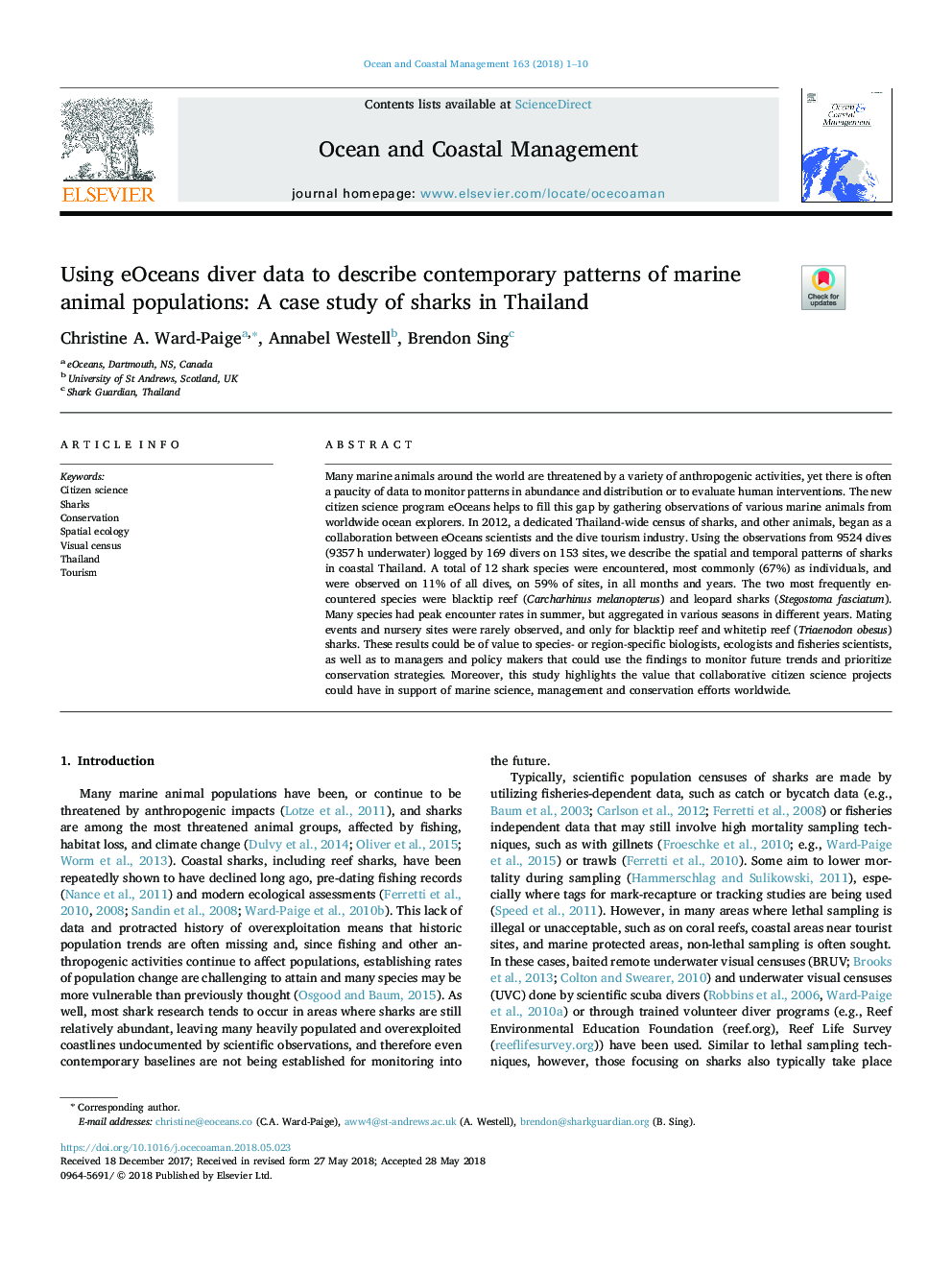| Article ID | Journal | Published Year | Pages | File Type |
|---|---|---|---|---|
| 8060496 | Ocean & Coastal Management | 2018 | 10 Pages |
Abstract
Many marine animals around the world are threatened by a variety of anthropogenic activities, yet there is often a paucity of data to monitor patterns in abundance and distribution or to evaluate human interventions. The new citizen science program eOceans helps to fill this gap by gathering observations of various marine animals from worldwide ocean explorers. In 2012, a dedicated Thailand-wide census of sharks, and other animals, began as a collaboration between eOceans scientists and the dive tourism industry. Using the observations from 9524 dives (9357â¯h underwater) logged by 169 divers on 153 sites, we describe the spatial and temporal patterns of sharks in coastal Thailand. A total of 12 shark species were encountered, most commonly (67%) as individuals, and were observed on 11% of all dives, on 59% of sites, in all months and years. The two most frequently encountered species were blacktip reef (Carcharhinus melanopterus) and leopard sharks (Stegostoma fasciatum). Many species had peak encounter rates in summer, but aggregated in various seasons in different years. Mating events and nursery sites were rarely observed, and only for blacktip reef and whitetip reef (Triaenodon obesus) sharks. These results could be of value to species- or region-specific biologists, ecologists and fisheries scientists, as well as to managers and policy makers that could use the findings to monitor future trends and prioritize conservation strategies. Moreover, this study highlights the value that collaborative citizen science projects could have in support of marine science, management and conservation efforts worldwide.
Related Topics
Physical Sciences and Engineering
Earth and Planetary Sciences
Oceanography
Authors
Christine A. Ward-Paige, Annabel Westell, Brendon Sing,
